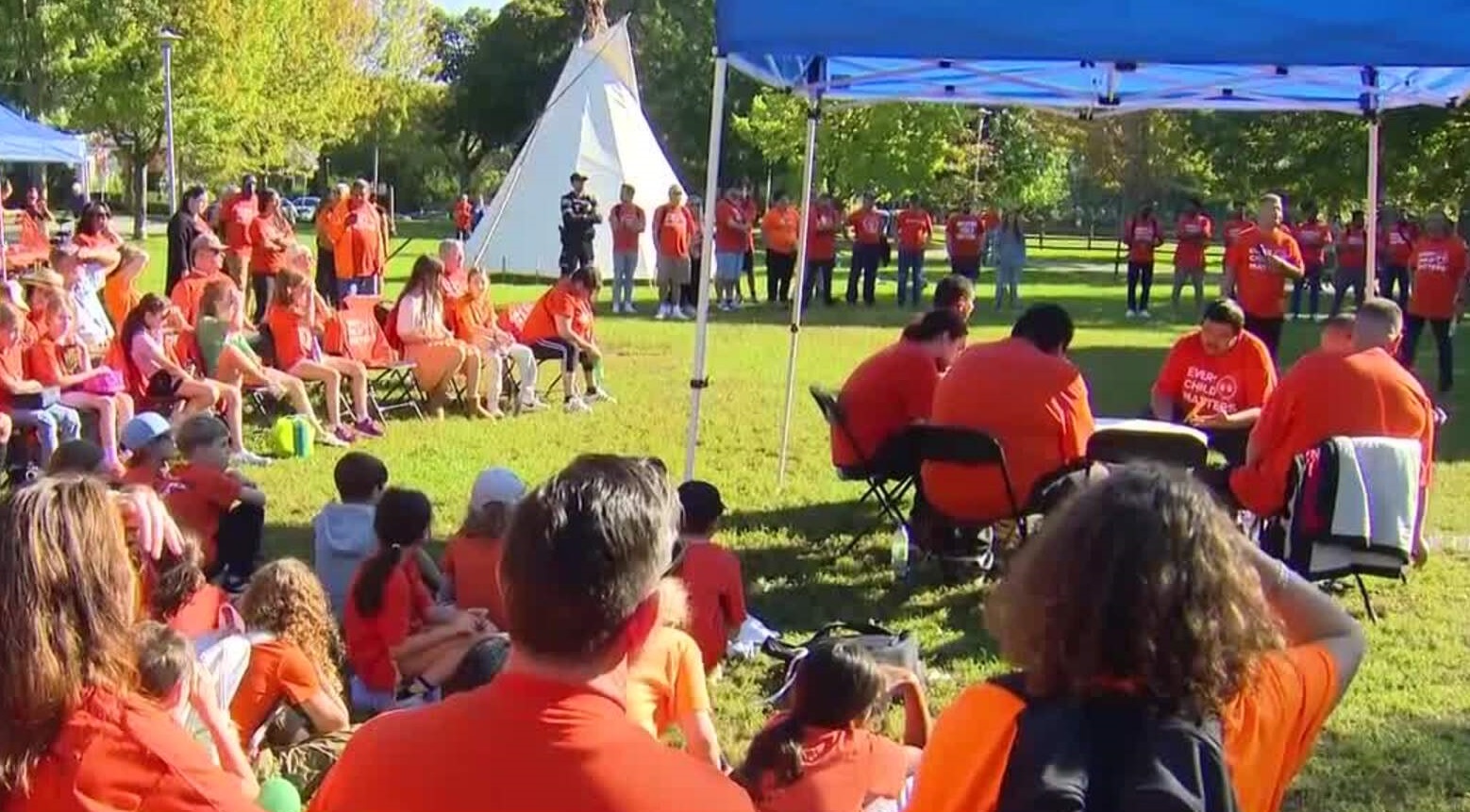
Indigenous organization Na-Me-Res held its third annual Day of Remembrance on Monday. The gathering provided an opportunity for members of the community to share a piece of their sacred culture with all walks of life.
“I know often our neighbours don’t have much opportunity to engage with us, so this is a wonderful day to do that, and hopefully walk away and get to know each other a little bit better, and move a little step forward towards reconciliation,” said Steve Teekens, Executive Director, of Na-Me-Res.
It was also a day to somberly reflect on painful truths that several Indigenous generations have had to bear.
“I was lucky enough that I was with my aunt and uncle, where others that were my age or younger were put into non-native homes,” said John Roy, Oshkabaywis, of the Native Men’s residence. “A lot of bad things happened to these kids in those homes.”
The establishing of the National Day of Truth and Reconciliation fulfills one of the 94 calls to action from the 2015 Truth and Reconciliation Commission. But those in the Indigenous community say work on the remaining recommendations has slowed down. So far, between 11 and 14 have only been completed. And according to Indigenouswatchdog.org, progress on fulfilling the remaining calls has stalled in recent years.
“We still have to do a lot of heavy lifting to achieve those 94 calls,” said Teekens. “We still have a long way to move forward.”
Community members said some recommendations could be fulfilled almost immediately, including call to action #78 which asks that Ottawa give $10 million to Indigenous communities for reconciliation efforts.
“Underfunding for Indigenous programs is not a new story, it’s something that many of our communities have lived with for a long time,” said Teekens. “It’s a huge injustice.”
Another call to action that community members said could be quickly fulfilled is the recommendation where all levels of government are asked to establish measurable goals to identify and close health gaps in the Indigenous community.
“It has to be more accessible, it has to be more geared towards First Nations people, because when you look at a western based philosophy of healing, it’s not our ways of doing things,” said John LaForme, Life skills coordinator at Na-Me-Res.
While many gatherings on the National Day of Truth and Reconciliation helps to bring Indigenous history and teachings to the forefront, Teekens said the push is ongoing for elected officials to do more to ensure reconciliation and healing goes on.
“I think that’s going to make a better future for all Canadians and improve Indigenous Canadian relationships moving forward.”